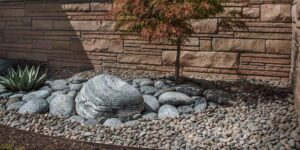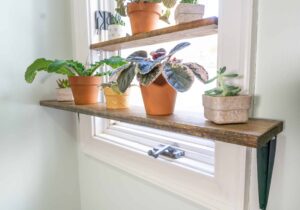
Arborvitae, with its evergreen foliage and dense growth habit, is a popular choice for creating privacy screens, windbreaks, and ornamental plantings in outdoor landscapes. If you’re wondering how many arborvitae you need for a 50-foot space, this guide will provide you with essential tips and calculations to help you plan your planting project effectively.
I. Introduction to Arborvitae
A. Overview of Arborvitae Plants: Arborvitae, belonging to the genus Thuja, encompasses several species and cultivars known for their versatility, durability, and year-round greenery.
B. Factors to Consider for Planting Arborvitae: Before planting arborvitae, consider factors such as soil conditions, sun exposure, climate, and intended purpose, to ensure optimal growth and performance.
C. Importance of Proper Spacing: Proper spacing between arborvitae plants is crucial for allowing adequate air circulation, sunlight penetration, and room for growth, promoting healthy development and longevity.
II. Calculating the Number of Arborvitae Needed
A. Determining Plant Spacing: Refer to ideal spacing guidelines for the specific arborvitae variety you’ve selected, considering factors such as mature plant size, growth rate, and intended use.
B. Calculating Linear Feet of Planting Area: Measure the length of the planting area where you intend to install the arborvitae hedge or screen, adjusting for curves, corners, or irregular shapes.
C. Estimating the Number of Arborvitae: Use spacing guidelines to calculate the number of plants needed based on the linear footage of the planting area, adjusting for desired density and privacy level.
III. Practical Tips for Planting Arborvitae
A. Selecting Healthy and Well-Sized Plants: Choose arborvitae specimens from reputable nurseries that exhibit vigorous growth, healthy foliage, and well-developed root systems.
B. Preparing the Planting Site: Clear the planting site of debris and vegetation, amend the soil as needed for optimal drainage and fertility, and ensure proper sun exposure for healthy growth.
C. Planting and Caring for Arborvitae: Dig planting holes of appropriate size, backfill with soil and water thoroughly, mulch around plants to conserve moisture and suppress weeds, and provide ongoing care and maintenance as needed.
IV. Alternative Approaches and Considerations
A. Using Larger Arborvitae Specimens: Consider using larger arborvitae specimens for immediate privacy and impact, weighing the benefits and considerations of upfront cost and long-term maintenance.
B. Incorporating Companion Plants or Design Elements: Enhance arborvitae plantings with companion shrubs, trees, or hardscape features to create visual interest, texture, and structure in the landscape.
C. Consulting with Landscaping Professionals: Seek advice from landscaping professionals for site-specific considerations, customized design solutions, and professional installation services to ensure optimal results.
V. Conclusion: Enhancing Outdoor Spaces with Arborvitae Plantings
Arborvitae plantings can transform outdoor spaces, providing privacy, structure, and year-round greenery for landscapes of all sizes and styles. By following proper spacing guidelines, selecting healthy plants, and providing adequate care and maintenance, you can create beautiful and functional arborvitae installations that enhance the beauty and enjoyment of your outdoor environment. Whether you’re planting a hedge, screen, or ornamental specimen, arborvitae is a versatile and reliable choice for enhancing outdoor spaces with natural beauty and charm.




